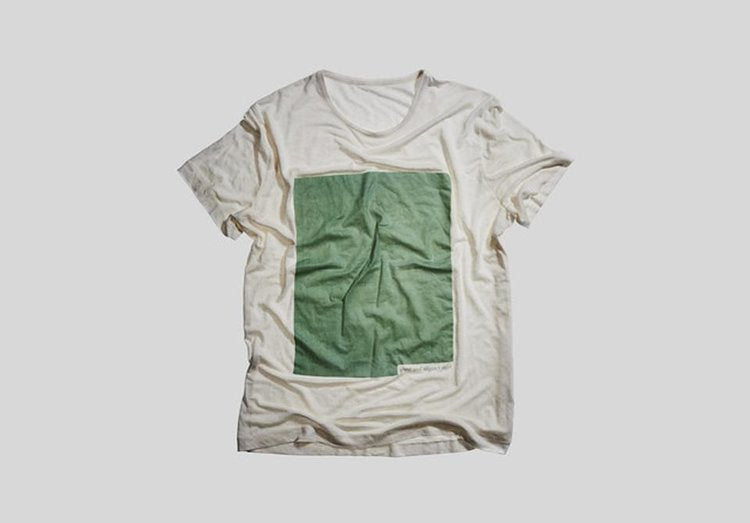Tons of clothes are thrown in the bin once they’ve been worn out. As most contain some sort of synthetic material, they cannot easily be recycled or burned – even faux leather is generally made from plastic. In the UK, an estimated 350,000 tonnes of clothing go to landfills every year.
Natural materials, like cotton and wool, break down much faster than plastic, usually in less than a year. Plants and algae now offer an even eco-friendlier solution to the fashion industry’s giant waste problem. Adventure-clothing brand Vollebak has created a t-shirt from pulped eucalyptus, beech and spruce that will fully decompose within three months.
Rather than using the traditionally synthetic inks, the company created a printable ink from algae to decorate the t-shirt with a large green rectangle on the front. Algae only needs light, carbon dioxide and water to grow – and it grows at record speed, with the ability to cause algal blooms in lakes and the ocean within a day. “It’s exactly the kind of natural resource that we should be using. There’s an astonishing amount of it, and it can multiply at a crazy speed,” says Steve Tidball, who founded Vollebak with his twin brother.
Tons of clothes are thrown in the bin once they’ve been worn out. As most contain some sort of synthetic material, they cannot easily be recycled or burned – even faux leather is generally made from plastic. In the UK, an estimated 350,000 tonnes of clothing go to landfills every year.
Natural materials, like cotton and wool, break down much faster than plastic, usually in less than a year. Plants and algae now offer an even eco-friendlier solution to the fashion industry’s giant waste problem. Adventure-clothing brand Vollebak has created a t-shirt from pulped eucalyptus, beech and spruce that will fully decompose within three months.
Rather than using the traditionally synthetic inks, the company created a printable ink from algae to decorate the t-shirt with a large green rectangle on the front. Algae only needs light, carbon dioxide and water to grow – and it grows at record speed, with the ability to cause algal blooms in lakes and the ocean within a day. “It’s exactly the kind of natural resource that we should be using. There’s an astonishing amount of it, and it can multiply at a crazy speed,” says Steve Tidball, who founded Vollebak with his twin brother.

The algae is grown in a bioreactor and passed through a filter, which leave a soupy paste that is dried to create a fine powder. Mixing the dried powder with a water-based binder produces the final product: a green algae ink, which is printed onto the fabric made from wood pulp.
Since it can’t survive outside water, the algae on the t-shirt is no longer alive. Its natural pigment is more sensitive than in chemical dyes, meaning that the algae might be a different shade of green everytime it is printed onto a t-shirt. In some cases, the ink might look more blue.
“As soon as it comes into contact with air it starts to oxidise, which means the algae will begin to change colour again and your t-shirt will look different from one week to the next as it fades,” says Tidball, adding this should be seen as something positive as it will make every t-shirt unique.
Eventually, as the t-shirt is exposed to sunlight and put through the washing machine, the print’s colour will become the same as the t-shirt itself. A hand-wash in cold water with as little detergent as possible will slow the fading and make the ink last for longer.
At the end of the t-shirt’s life, all you need to remember is to compost it – or bury it in your garden. “Here it will biodegrade, turn into soil, and help new plants to grow,”
Via: https://www.wired.co.uk/article/vollebak-algae-plant-shirt
